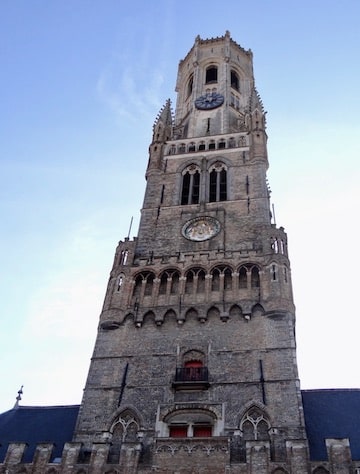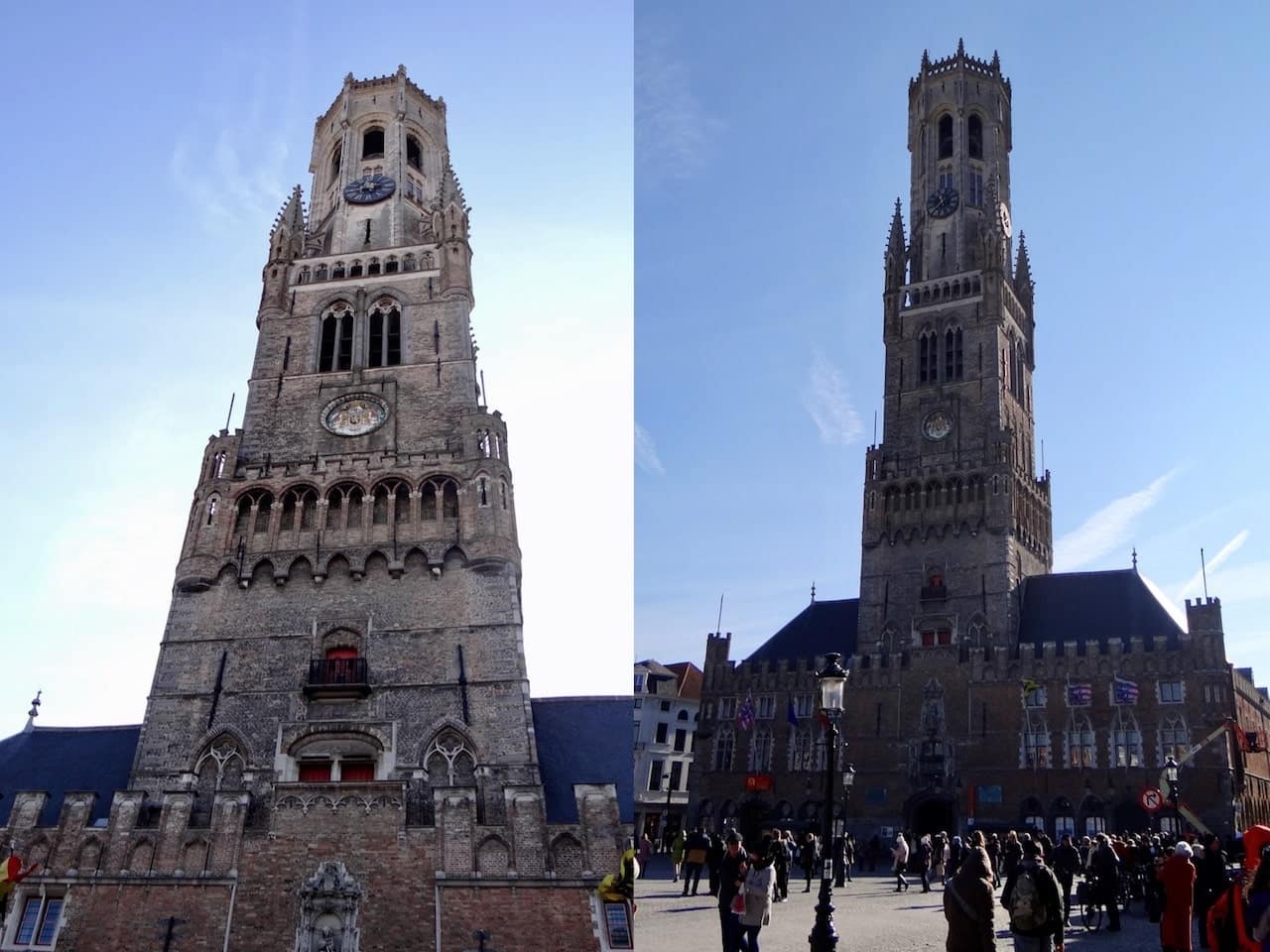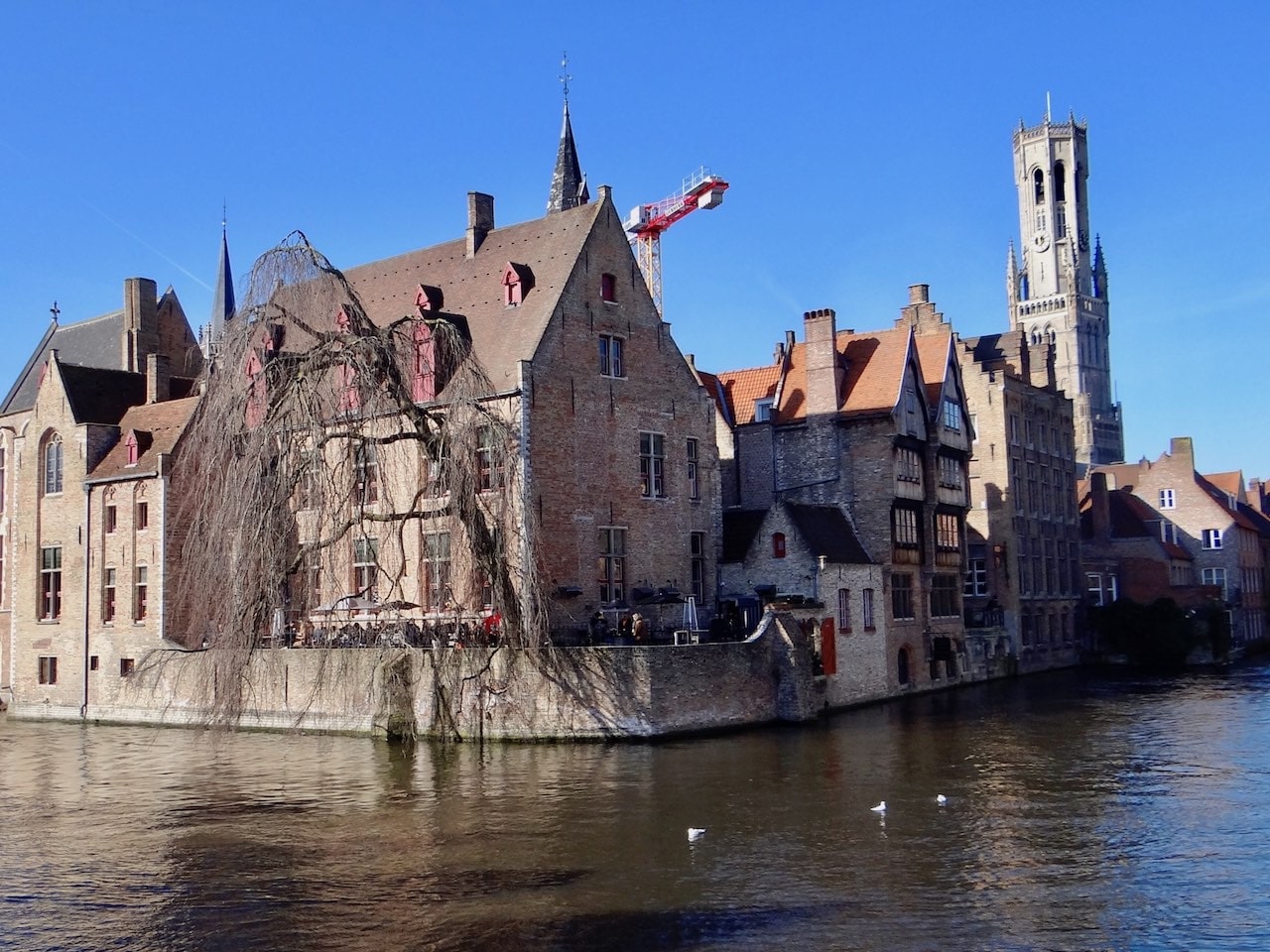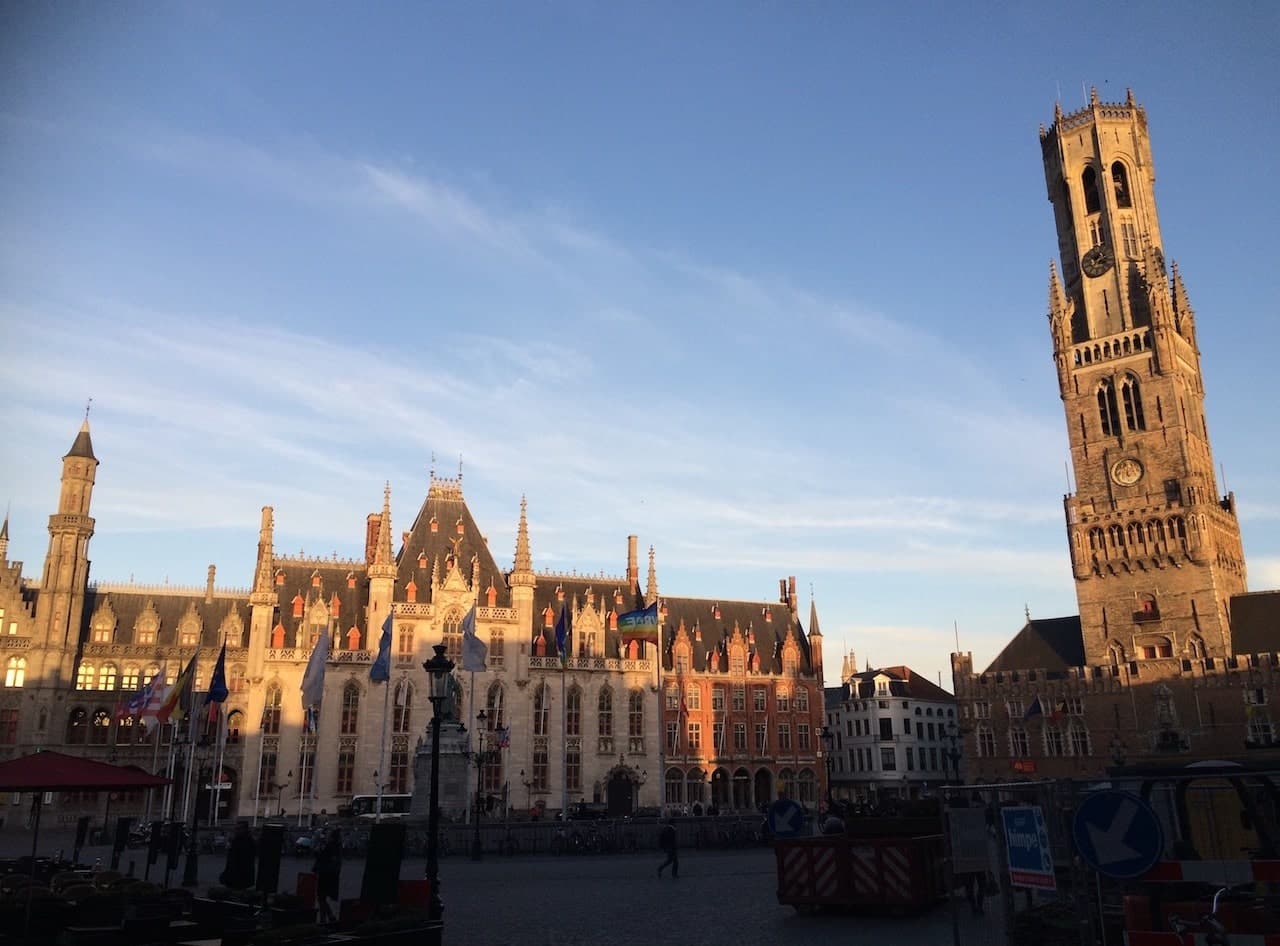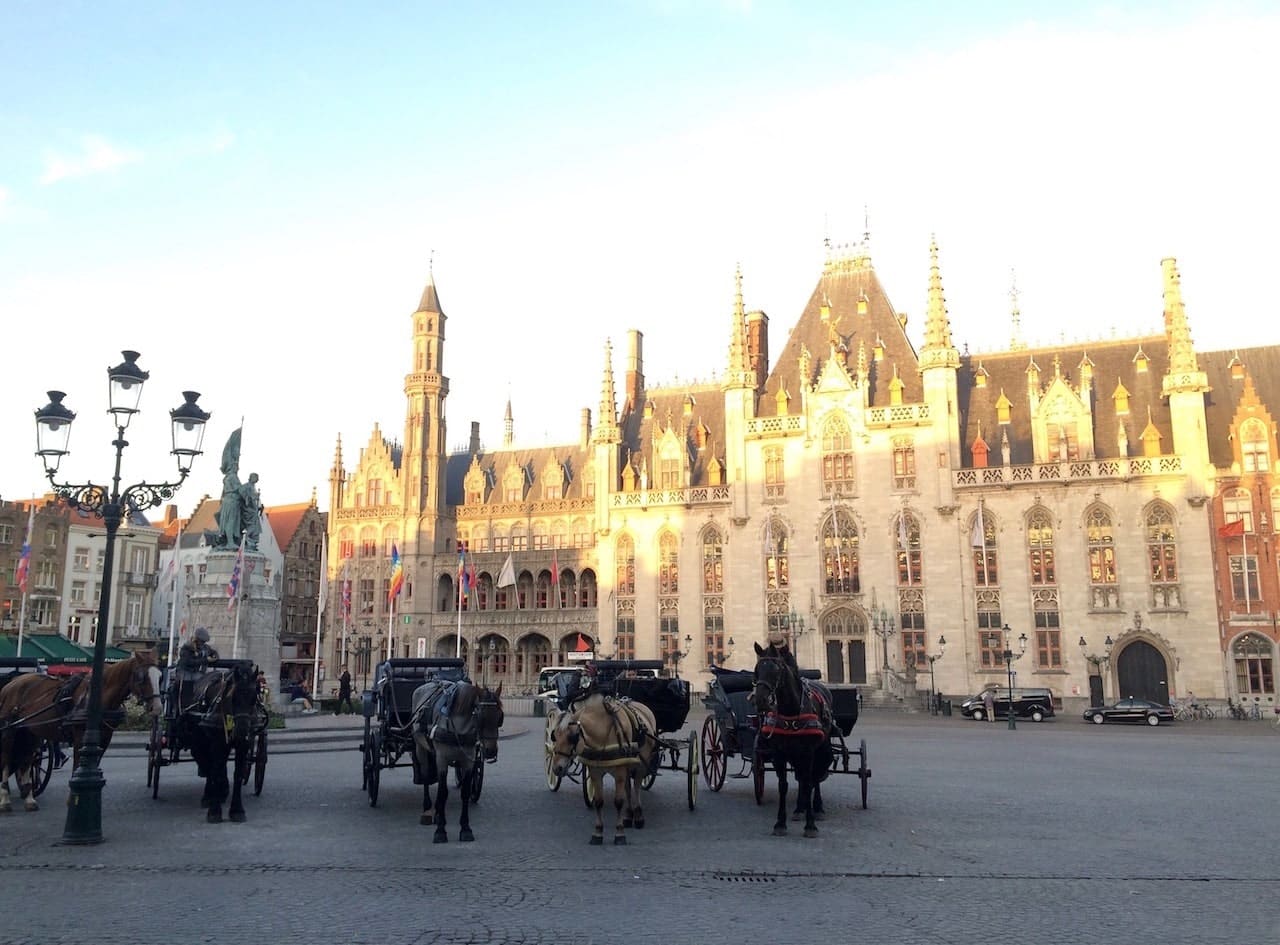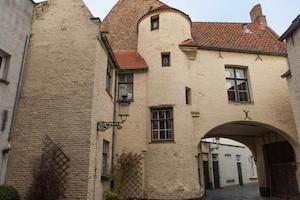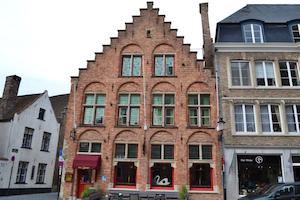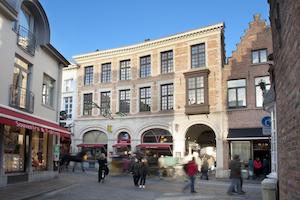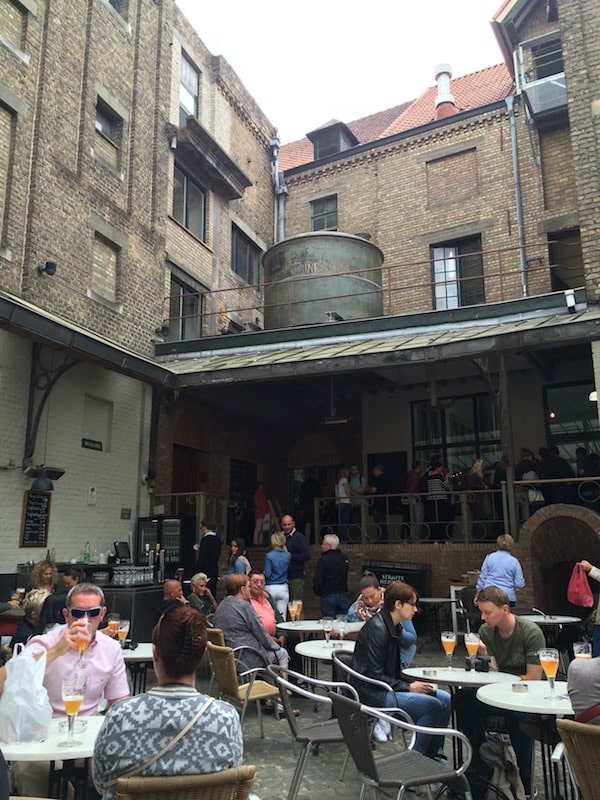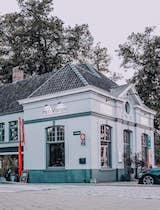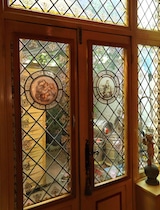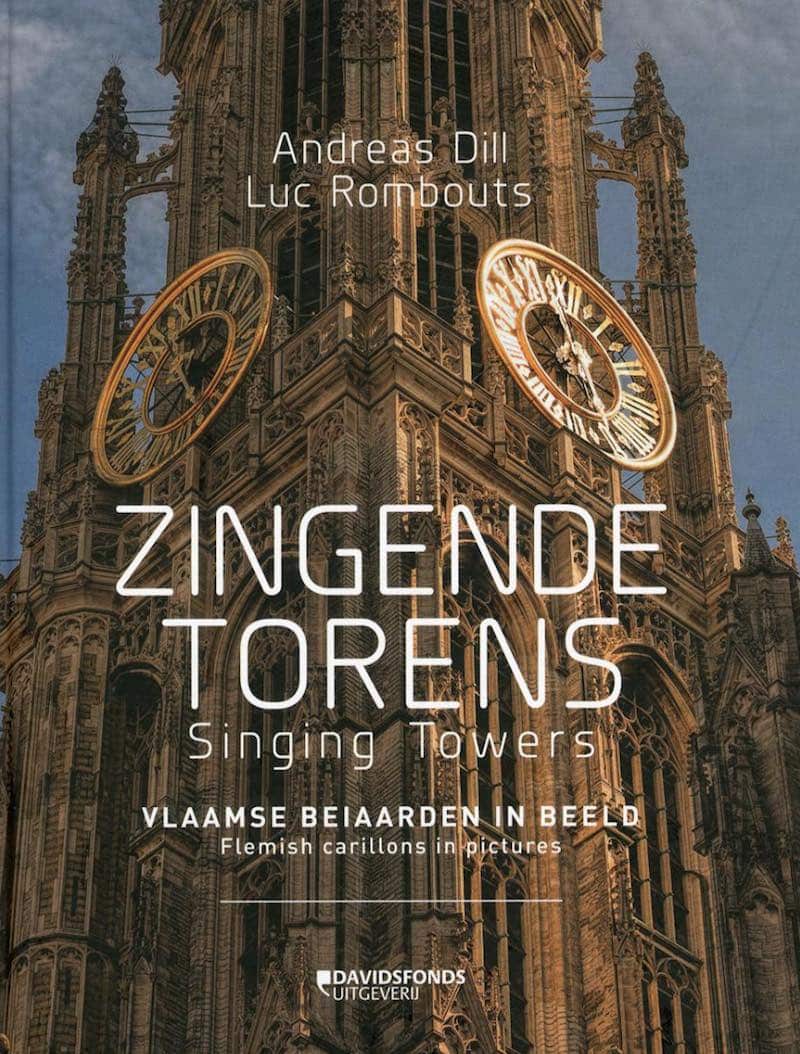Our dress rehearsal
Visit in February 2018
A beautiful encounter
However, an unexpected encounter befalls us when we enter the attic of City Hall. It turns out to be Noël Reynders, the former city carillonneur of Sint-Truiden….
Belfry of Bruges
Concise history:
Bruges’ belfry: a living witness to urban power
A beginning in wood and stone
It is the early 13th century when the city of Bruges is in full bloom. On the site of the current belfry, there are already several wooden halls by then, serving as market places for the growing wool and cloth trade. Around 1240, the city decided to replace these wooden structures with a stone hall complex with a belfry tower on top. That tower was given a wooden spire and was intended as a symbol of the city’s prosperity as well as a storage place for the city’s seal of approval, the city seal and the city treasury.
The oldest textual mention of the building dates from 1211. Around 1240 is generally believed to be the beginning of construction of the stone complex. Construction proceeds in phases and has marked differences in material use and style between the Market and Wollestraat sides, for example.
Setbacks and rebuilding
In 1280 disaster struck: a great fire ravaged the belfry and destroyed its upper part. In the process, the entire city archives from before that year also went up in flames. This led Bruges to build a separate town hall on the Burg, which henceforth took over the administrative functions. Already in 1296 the tower was repaired, with two square substructures and again a wooden spire.
However, the tower remained vulnerable. In 1345-1346 it is raised with a second tower segment, receives a new covering and the bell mechanism is renewed. Shortly thereafter, in 1389, a severe storm caused considerable damage. Master mason Jan van Oudenaerde leads the repairs in 1394-1395: he works on the bell holes, the corner turrets and the maintenance of the hall wings.
Higher and higher, prouder and prouder
The tower became increasingly impressive during the 15th century. In 1482-1486, an octagonal superstructure in sandstone was added, with a wooden spire crowned by a statue of Saint Michael. This extension is believed to be the work of Bruges master masons Paul and Josse Roelens. The Brussels stonecutter Lieven van Boghem supplied the material. But even this new upper deck does not survive long: in 1493 lightning strikes, causing the loss of the spire, bells and clockwork once again. Master carpenter François Bruhault builds a new wooden spire from 1499 to 1502, this time crowned with an ascending lion.
Stability and renewal
The tower also proved structurally fragile over the centuries. As early as the 16th century, one notices that the tower tilts slightly in a southeastern direction. In 1554, heavy sandstone pillars were added at the corners to prevent further sagging. This slope proved stable and harmless during later restorations: in total, the belfry now tilts 87 centimeters.
The 16th century brought further important embellishments: new wall openings on Market and Wool Street, the addition of Renaissance galleries and small rectangular windows on the upper floors.
Fire and restorations
In 1741, lightning strikes again. The wooden spire and the carillon are lost. The restoration in 1753 omits a new spire, so the silhouette of the belfry has been flat since then. In 1826, the entire complex undergoes a “complete restoration,” including the renewal of the belfry and the removal of some dormers.
During World War I, German soldiers use the halls as a garage and kitchen, leading to destruction and modifications. In 1923, they return to their original condition.
A belfry for the future
Between 1964 and 1975, the belfry underwent a thorough restoration under the direction of Bruges architects J. and M. Vermeersch. Old building materials are preserved as much as possible, the octagonal superstructure and the corner turrets restored. The wooden roof seat is replaced by a concrete construction. The carillon is also tackled: in 1980 it is again fully functional, with 47 bells weighing 27.5 tons. The playing drum, unique of its kind, continues to play music on a quarter-hourly basis.
Unesco World Heritage Site
In recent decades, the belfry has gained greater recognition. In 1999, it was included on the UNESCO World Heritage List as an example of medieval civic architecture and a symbol of urban autonomy and pride.
Living History
Today, the belfry towers 83 meters high above Bruges. Those who climb the 366 steps will discover the treasure room, the drum room and the workplace of the city carillonneur along the way. The tower lives, sings, warns, welcomes and remembers. It is not just a monument, but a beating heart of Bruges’ history – and a beacon that has guarded its city for eight centuries.
Sources:
- #1 2003, Along Flemish Belfries and Townhouses, Michiel Heirman, Davidsfonds Publishers, Leuven.
- ‘#2 Singing Towers’ Andreas Dill & Luc Rombouts, Davidsfonds Leuven, 2017.
- #3 Carillons and Towers in Belgium, Musea Nostra, Ludion Publishing House, Ghent, 1994.
- #4 Web site: onroerenderfgoed.be, accessed August 1, 2025.
- #5 Website: “Wikipedia Belfry of Bruges,” accessed August 1, 2025.
Characteristics:
Origins:
Built:
Building Material:
Style period:
Height:
Number of steps:
Accessible:
1240
1240
brick
gothic/neo-gothic
83 meters
366 steps
Yes, see information
Opening Hours
Monday through Sunday 9:30 a.m. to 6 p.m.
Admission up to one hour before closing time.
For safety reasons, the number of people who can visit the tower at the same time is limited.
No visits can be reserved. Every visitor must line up. Please allow for a possible waiting period.
Accommodation options in Bruges
Hotel Butterhouse
Hotel Boterhuis is located in the historic center of Bruges, just a 3-minute walk from the Grote Markt and the belfry. The hotel offers free Wi-Fi, an on-site bar and…
Hotel Salvators
Hotel Salvators is located in the center of Bruges, in the shadow of St. Salvators Cathedral and 50 meters from the shopping area. The hotel has…
Hotel Bourgoensch Hof
The Bourgoensch Hof offers rooms in the historic center of Bruges, just 200 meters from the Grand Place. This 3-star hotel has a terrace overlooking…
Food and drink
During our visit to Bruges, we visited several premises to take care of the inner man as well. If you have any additions or an absolute tip where a visit to Bruges culinary should be graced please send a message to: info@belforten.com.
1. Brewery De Halve Maan
A visit to Bruges is hardly complete if brewery De Halve Maan is not visited. Apart from the fun tour, you can eat very well and not least of all grab a good pint.
2. The Vision
When you want insanely delicious food in Bruges go to Het Visioen. Belgian-French cuisine combines the flavors of Asia. The menu changes monthly. In addition to fine three-course menus, they also serve delicious tapas.
3. The Seventh Heaven
Here in seventh heaven, what more could we want? The lyrics of The Dike could have been written here. Lunch of Flemish rondstoverij, salad and fries with a good pint: like an Angel cycling across your tongue! The value for money was more than excellent!
The three most recent posts
On this page we have collected all the relevant information for visiting this belfry. To keep this up to date, we are constantly on our way to one of the 56 belfries on the Unesco World Heritage List. Below are the latest additions.
The judge, the witch and the devil
Three special stories from the history of Tielt are symbolized and immortalized by three statues of Jef Claerhout.
Up in the belfry of Tielt!
Extensive message about the tour of the belfry of Tielt accompanied by a city guide and the subsequent ‘climb’.
Theater Kalleke Step
Notice of an unexpected visit to theater Kalleke Step in Grembergen during a planned visit to Dendermonde.
